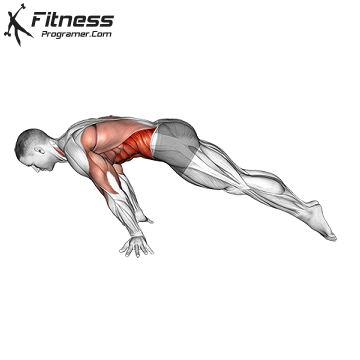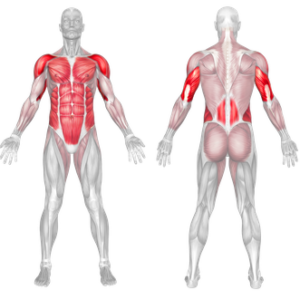Overview
The Lean Planche is a bodyweight exercise where the body is held at a forward lean while balancing on the hands. This movement builds strength in the shoulders, core, and arms, and is often used as a precursor to the more difficult Straddle and Full Planche. By leaning your body forward while maintaining support on your hands, the Lean Planche provides a foundation to build strength and control for mastering more advanced calisthenic moves.
How to Perform the Lean Planche

To correctly perform the Lean Planche, follow these steps:
Start in a Push-Up Position: Begin in a traditional push-up position with your hands placed slightly wider than shoulder-width apart.
Push Your Shoulders Forward: As you engage your arms and shoulders, push your body forward, so your shoulders extend beyond your hands. Your elbows should remain straight.
Engage Your Core: Tighten your core muscles to prevent sagging in your lower back, keeping your body in a straight line from head to feet.
Lift Your Feet Off the Ground: Begin to lift your feet off the floor by slowly shifting more weight onto your hands and engaging your core further. Only the tips of your toes should lightly touch the floor, providing minimal support.
Hold the Position: Maintain the forward lean, keeping your body as horizontal as possible. Hold this position for a set time, aiming to increase your hold as your strength builds.
Tips for Proper Form
Straighten the arms: Keep your arms fully extended with your elbows locked to avoid strain and engage your shoulders more effectively.
Engage the core: Tense your abdominal muscles to prevent arching or sagging in the lower back.
Push through the palms: Actively press into the ground with your palms to stabilize your body and prevent tipping forward.
Keep your gaze neutral: Look slightly ahead of you to help with body alignment and reduce neck strain.
Start with small leans: Begin with a slight lean and gradually increase the angle as you build strength in your shoulders and core.
Common Mistakes
Not engaging the core: Failing to activate the core can cause the lower back to sag, decreasing stability and putting unnecessary stress on the spine.
Bending the elbows: Bending the elbows compromises the alignment and makes the exercise less effective. Always keep your arms straight.
Leaning too far forward: Overextending the lean can make it difficult to maintain balance. Focus on controlled movements and avoid going beyond your capability.
Not using wrist support: If the wrists are not aligned properly, it can cause strain and discomfort. Make sure your wrists are directly under your shoulders and fingers are spread for better grip.
Skipping progressions: Attempting the full Lean Planche without gradually increasing the lean can lead to poor form and potential injury. Use progressions to build strength over time.
Benefits of the Lean Planche
Develops upper body strength: The Lean Planche helps build strength in the shoulders, arms, and wrists, which are crucial for more advanced bodyweight exercises.
Improves core stability: Holding the Lean Planche requires intense core engagement, helping improve overall stability and strength in the abdominal and lower back muscles.
Increases body awareness: Mastering the Lean Planche enhances your body control and proprioception, key for advanced calisthenics movements.
Progressive foundation for planche skills: This exercise serves as an essential step in progressing toward the Full Planche, providing a solid base for more challenging movements.
Enhances wrist and shoulder mobility: The position encourages mobility in the wrists and shoulders, which is essential for performing more advanced exercises without injury.
How to Incorporate Into Your Routine
Incorporate the Lean Planche into your bodyweight training by starting with shorter holds and gradually increasing the duration as you build strength. Combine it with exercises like pike push-ups and high plank to develop the necessary muscles for the progression. Use the Lean Planche as part of a structured planche progression, focusing on building endurance and form before progressing to more advanced variations.
Lean Planche Muscles Worked

